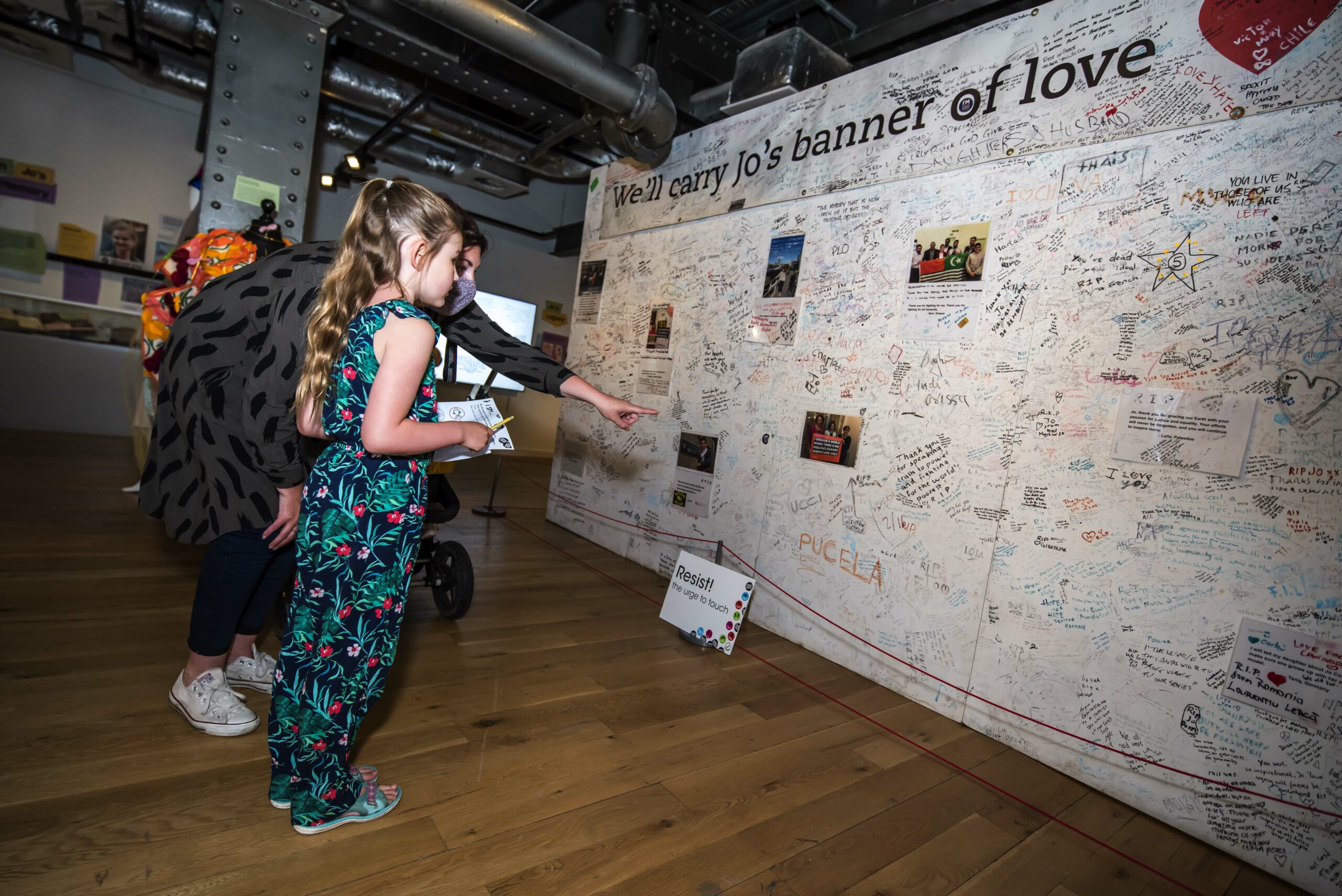Created in partnership with University of Leicester placement student, Lily Westcott
Introduction
Kids in Museums believes it is important to involve children, young people and families in ‘difficult’ or ‘challenging’ discussions in museums. Museums have a role as safe spaces for exploration and discussion of potentially sensitive topics, including violence, discrimination and mental health. However, sometimes these ‘difficult’ topics are avoided, or downplayed with young audiences.
In our 2021 Manifesto Survey of 11-25 year olds, 83% of respondents stated it was important for museums to address contemporary social issues. The survey revealed that young people would like museums to prioritise anti-racist work, address the stigma around mental health, and tell stories about groups that have been marginalized in history, such as LGBTQ+ communities. Only 12% of 16-24 year olds believe that London museums explore issues and stories that are relevant to them (DCMS report).
In 2019, the Arts Connect Challenging Conversations report concluded that gallery and heritage staff, volunteers and teachers were concerned about the number and variety of ‘challenging and sensitive’ topics they were being encouraged to discuss with young audiences without guidance, training or support. Museum staff felt they were at the frontline of any backlash to controversial exhibitions and were concerned about the impact of controversial displays on visitors.
RCMG research also highlights that one of the main concerns of museums and heritage sites is how they can offer meaningful, entertaining, and engaging experiences and at the same time, treat challenging subject matters respectfully and with integrity.
Since the remit of what could be considered ‘difficult’ or ‘challenging’ is so broad, this resource is intended as a starting point, with links to further resources, reading and case studies provided throughout. This resource is based on interviews, surveys and research with museum staff from Jewish Museum London, Migration Museum, Museum of London, National Museums Liverpool, National Museum Wales and People’s History Museum. We would like to thank these museums for their time.
What is a difficult or challenging topic?
There is no generally agreed definition of difficult or challenging topics. In this resource, the terms ‘difficult’ or ‘challenging’ have been used as a general term for topics which fall under Jennifer Bonnell and Roger I Simon’s definition of ‘difficult’ topics in exhibitions. ‘Difficult’ topics, they argue, are ones that elicit negative emotions, evoke a heightened sense of anxiety, or where visitors encounter unresolved experiences of fear and grief.
To better understand what kind of topics museums found difficult or challenging, we consulted and surveyed a range of museum staff. They highlighted these key issues:
- Climate change and eco anxiety
- Death, grief and loss
- Colonialism and imperialism
- Racism, Black Lives Matter and Indigenous issues
- Discrimination against minority groups, including antisemitism and LGBTQ+ discrimination
- Sex and sexuality
- Mental health and wellbeing
- War, violence and conflict
- Politicised topics, for example, the Far Right, oil sponsorship of museums, migration and gentrification.
It is important to note that ‘difficult’ topics in museums are by no means new – museums dedicated to the Holocaust and memorial sites have been engaging audiences with sensitive topics for decades.
Why consult and collaborate on challenging topics with young people?
There are a variety of benefits to engaging young audiences with difficult or controversial topics. These include supporting learning, fostering understanding and promoting tolerance of difference. For example, in Northern Ireland, the Schools Outreach Programme brings together young people from different backgrounds to visit both the Museum of Free Derry, and the Siege Museum, where they have a discussion with representatives from each institution. In a Museums Association article, Julieann Campbell from the Museum of Free Derry says that “contentious issues from our history can be used as tools for education and reconciliation”, promoting dialogue in the shared spaces of museums.
One of the major benefits with engaging young audiences with difficult or challenging topics is getting young people more involved and engaged with museums. The Children in Scotland project Living Museums aimed to ensure the voices and experiences of young people (14-21) were represented at every level of the museum. The Stirling group produced Generation Change: Young People’s Participation in Protest, an exhibition launched in August 2021, aiming to explore how young people responded to issues that sparked worldwide protests, including climate change, Black Lives Matter, and women’s safety.
Youth Panels and Young Trustees consistently call for museums to engage with challenging topics. This gives young people a say over how museums tell stories about objects, such as with the Reframing Picton youth-led project at National Museum Cardiff. This included the SSAP Youth Leadership Network and the Amgueddfa Cymru Producers in a reinterpretation of the portrait of Thomas Picton, Governor of Trinidad.
Keep reading
Follow the links below to continue reading this resource.
-
Part 2: How can your museum engage children, young people and families with sensitive topics?
-
Part 3: How can your museum engage children, young people and families with sensitive topics?
Files for this Resource
Tags: Anti-racist, Guide, Welsh Language
Categories: Equality and inclusion
Audience: Children, Family, Primary school, Secondary school, Young people

